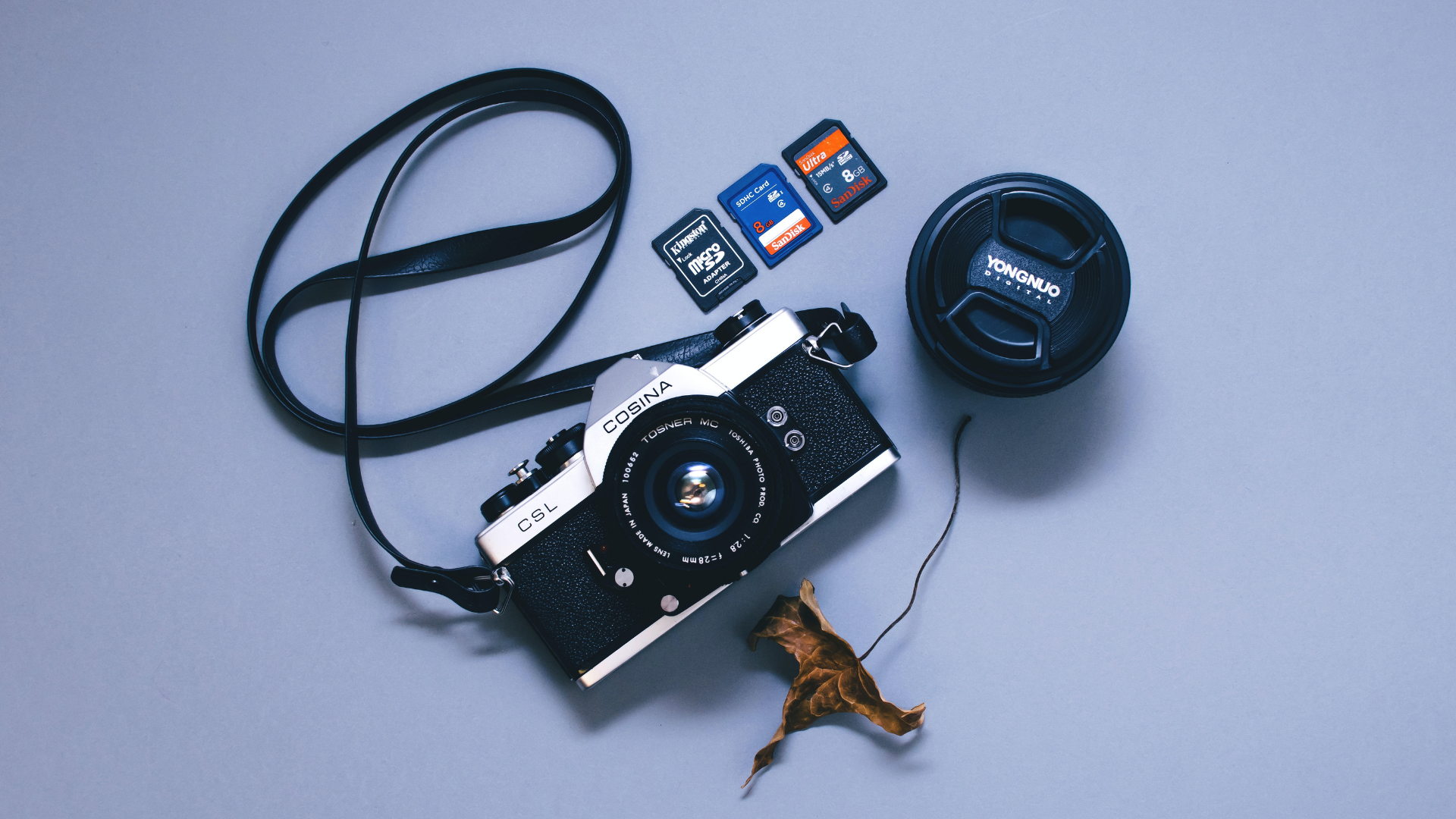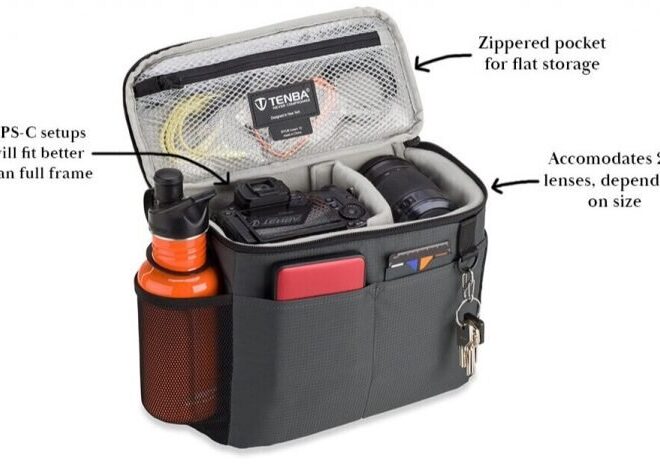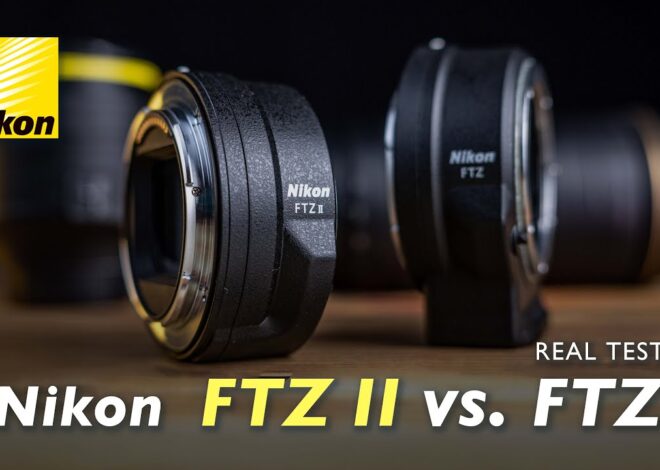
The Key Differences Between Nikon z7 vs. z7ii
As an Amazon Associate, I earn from qualifying purchases.
The Nikon Z7 was released in 2018 using the full-frame Z-mount system. After failing previous attempts, Nikon came again to design a mirrorless series. After giving a few updates two years later, in 2020, Nikon came out with the z7ii model.
The Z7 proved a strong challenger despite a few flaws, and firmware patches improved it significantly. Both models have had performance changes and can now compete with other camera brands.
If you’re a Nikon enthusiast, which one should you get? Making that decision, you should look at the differences. Let’s dig in!
Canon EOS R Vs. Sony Alpha A7R IV: Comparison Table
You want a new camera, and you are a fan of Nikon. The updated full-frame mirrorless camera is Z7ii which received a few updates after Z7. On the other hand, Z7 is a bit cheaper. Which one to buy? Look at the differences in features between these two.
| Camera Feature | Nikon Z7 | Nikon Z7 II | Superior |
| Released date | August 2018 | October 2020 | |
| Sensor Resolution | 45.7 MP | 45.7 MP | Draw |
| Sensor Type | BSI CMOS | BSI CMOS | Draw |
| Native ISO Sensitivity | ISO 64-25,600 | ISO 64-25,600 | Draw |
| Sensor Size | 35.9 × 23.9mm | 35.9 × 23.9mm | Draw |
| Image Size | 8256 × 5504 | 8256 × 5504 | Draw |
| Image Processor | EXPEED 6 | Dual EXPEED 6 | Nikon Z7 II |
| EVF Type / Resolution | QVGA / 3.6 million dots | QVGA / 3.6 million dots | Draw |
| EVF Improved Viewfinder Blackout | No | Yes | Nikon Z7 II |
| Built-in Flash | No | No | Draw |
| Storage Media | 1× CFe / XQD | 1× CFe / XQD + 1× SD UHS-II | Nikon Z7 II |
| Continuous Shooting Speed | 9 FPS (12-bit), 8 FPS (14-bit) | 10 FPS (12-bit), 9 FPS (14-bit) | Nikon Z7 II |
| Camera Buffer (12-bit Lossless) | 23 | 77 | Nikon Z7 II |
| Shutter Speed Range | 1/8000 to 30 seconds | 1/8000 to 900 seconds | Nikon Z7 II |
| Autofocus System | Hybrid PDAF, 493 points | Hybrid PDAF, 493 points | Draw |
| Eye AF in Wide-Area AF | No | Yes | Nikon Z7 II |
| Eye AF in Video | No | Yes | Nikon Z7 II |
| Video Maximum Resolution | 4K @ up to 30p, 1080p @ up to 120p | 4K @ up to 60p, 1080p @ up to 120p | Nikon Z7 II |
| Video HLG / HDR Out | No | Yes | Nikon Z7 II |
| Articulating, Touch LCD | Yes, Tilting | Yes, Tilting | Draw |
| LCD Size / Resolution | 3.2″ / 2.1 million dots | 3.2″ / 2.1 million dots | Draw |
| Wi-Fi / Bluetooth | Yes / Yes | Yes / Yes | Draw |
| Clutter-Free Live View Option | No | Yes; it must be assigned to a custom button | Nikon Z7 II |
| Oversensitive EVF Proximity Sensor Fix | No | Partial fix; EVF won’t engage when the rear LCD is tilted open | Nikon Z7 II |
| Firmware Update via Snapbridge | No | Yes | Nikon Z7 II |
| Battery | EN-EL15b | EN-EL15c | Nikon Z7 II |
| Battery Life (CIPA) | 330 shots | 360 shots | Nikon Z7 II |
| Battery Life (Video) | 85 min | 105 min | Nikon Z7 II |
| Battery Grip | MB-N10 | MB-N11 | Nikon Z7 II |
| Weather-Sealed Body | Yes | Yes | Draw |
| USB Version | Type-C 3.1 | Type-C 3.1 | Draw |
| Weight with Battery and Card | 675 g (1.49 lbs) | 705 g (1.55 lbs) | Nikon Z7 |
| Dimensions | 134 × 101 × 68mm (5.3 × 4.0 × 2.7 inches) | 134 × 101 × 70 mm (5.3 × 4.0 × 2.8 inches) | Nikon Z7 |
| MSRP Today | $2496 (Check here) | $2896 (Check here) | Nikon Z7 |
What are the Key Differences Between the Nikon Z7 and Z7ii?
The Z7 model is the successor of the Z6. After some failed attempts, Nikon finally came to the market with its first fully functional mirrorless full-frame camera.
I will now discuss the differences between these models by comparing some of their features.
Design
The Z7 and Z7ii have a 3.2″ 2.1m-dot LCD screen. Which is used for live view shooting and bright, clear, and vivid image playback.
Both feature a tilting design that allows them to function at high and low angles. Both versions have touchscreens for more effortless operation, navigation, and settings management.

Both versions have a 3.6m-dot OLED electronic finder for comfortable eye-level viewing. Other commonalities include 0.80x high magnification and NIKKOR optics to ensure a clean, clear image.
Z7ii is the successor to Z7, as we all know. Only a few measurements are different in terms of design and dimension. Both models share a lot of essential characteristics.

Both variants use a dot-matrix OLED display on the top panel. This low-power display allows you to access critical camera settings quickly.
Both versions include one CFexpress Type B/XQD memory card slot for storing photos and videos rapidly. Furthermore, the Z7ii offers one UHS-II SD card slot, allowing for versatile file storage via repeated, overflow, or segregated storage techniques.
A dust- and weather-resistant magnesium alloy chassis is ideal for operating in severe climes and lousy weather. An anti-slip substance and a joystick for smooth settings and focal point selection complement the ergonomic grip and overall form factor, engineered to assist handling for extended periods.

SnapBridge connection is built-in to provide smooth connectivity. SnapBridge connection built-in for smooth low-resolution image transmission and remote shooting capabilities.
Also, the mobile device can remotely trigger the shutter. Additionally, SnapBridge may be used to update the camera’s firmware in the Z7ii variant.
Sensor
The cameras use BSI-designed sensors. The Z7 and Z7ii feature a resolution of 45.7 megapixels and no low-pass filter.
The sensor used in the Z7 II is also found in the Z7, which was introduced first in 2018. So, at least according to the specifications and official press releases, there is no increase in image quality.
The Z7 has outstanding quality in terms of conducting extensive shadow recovery. However, there is still a chance of the banding occurring. The performance would be the same if Nikon hadn’t discreetly rectified the issue with the Z7 II.
The Z7 and Z7 II utilized ISOs of 64 to 25600 or 32 to 102400. Because of the sensor similarity, the ISO range remains unchanged.
Autofocus
There are 493 autofocus points on both the Z7 and the Z7ii. Around ninety percent of the sensor’s surface area is covered with these points.
The dual-processor, which was lacking in the Z7 model, has increased the overall performance of the Z7ii model. When utilizing the Wide-Area (L) mode instead of merely the Auto-Area option, Z7ii can recognize faces and eyes.
If there are numerous persons in your photo, Nikon Eye AF allows you to limit the region in which face and eye AF operate, limiting the likelihood of misfocusing elsewhere.
After the upgrade, face/eye detection can be chosen from the iMenu for faster switching when needed.
Video Recording
The Z7 can record 4K video at 30 frames per second. The Z7 can also record without a sensor crop, but the quality gets weaker because it uses the line-skipping method. DX crop option on Z7 can increase the quality.
With 4K resolution, the Z7 II can achieve 50 and 60 frames per second. The Z7 II can record 4K/60p with a 1.08x crop, which implies line-skipping is possible.
With the DX crop mode, 60p will be enough for higher quality.
Full HD has no difference, with frame rates up to 60p or 120p in slow motion mode.
In addition to N-Log, which is found on the Z7, the Z7ii camera also gets HLG. These profiles work in 10-bit 4:2:2 but only via the HDMI output. It is not available for internal recording.
3.5mm input and output for microphones and headphones are available on both products.
Battery Life
Nikon Z7 uses EN-EL15b battery, and Z7II uses the upgraded version EN-EL15c. Nikon Z7 can shoot 330 shots with this capability, and Z7II can shoot 360 photos. A little upgrade but appreciable.
Nikon Z7 can shoot 85 minutes of video, whereas Z7II can do it for 105 minutes. The battery grip is for both respectively MB-N10 and MBN11. MB-N11 is a little thick. That’s why the Z7II is larger than the Z7.
Price
The Z7 is available for around $2500, and Z7 II can be purchased for about $2900. If you don’t want to fall behind, then Z7ii is your camera. But if you want your budget to be executed perfectly, you can buy Z7.
Note: All prices are as per the date of May 2022.
Conclusion
It is clear that there are not many differences between Z7 and Z7II. But minor upgrades like buffer capacity, dual memory card slots and video shooting capabilities, and many small details will make it superior.
Where other brands are asking for much more price than they should be, Nikon released Z7II for less than the price of the Z7 when it first arrived. Nikon looked into upgrading overall performance, not megapixels like other brands.
Now, Nikon Z7 is older and cheap. Now it’s a competition between the prices. If I were to suggest, I would prefer Z7 because both are pretty similar features. But Z7 is a lot cheaper. The lens roadmap is also promising, and I could use the rest budget on them.
Related Posts:



